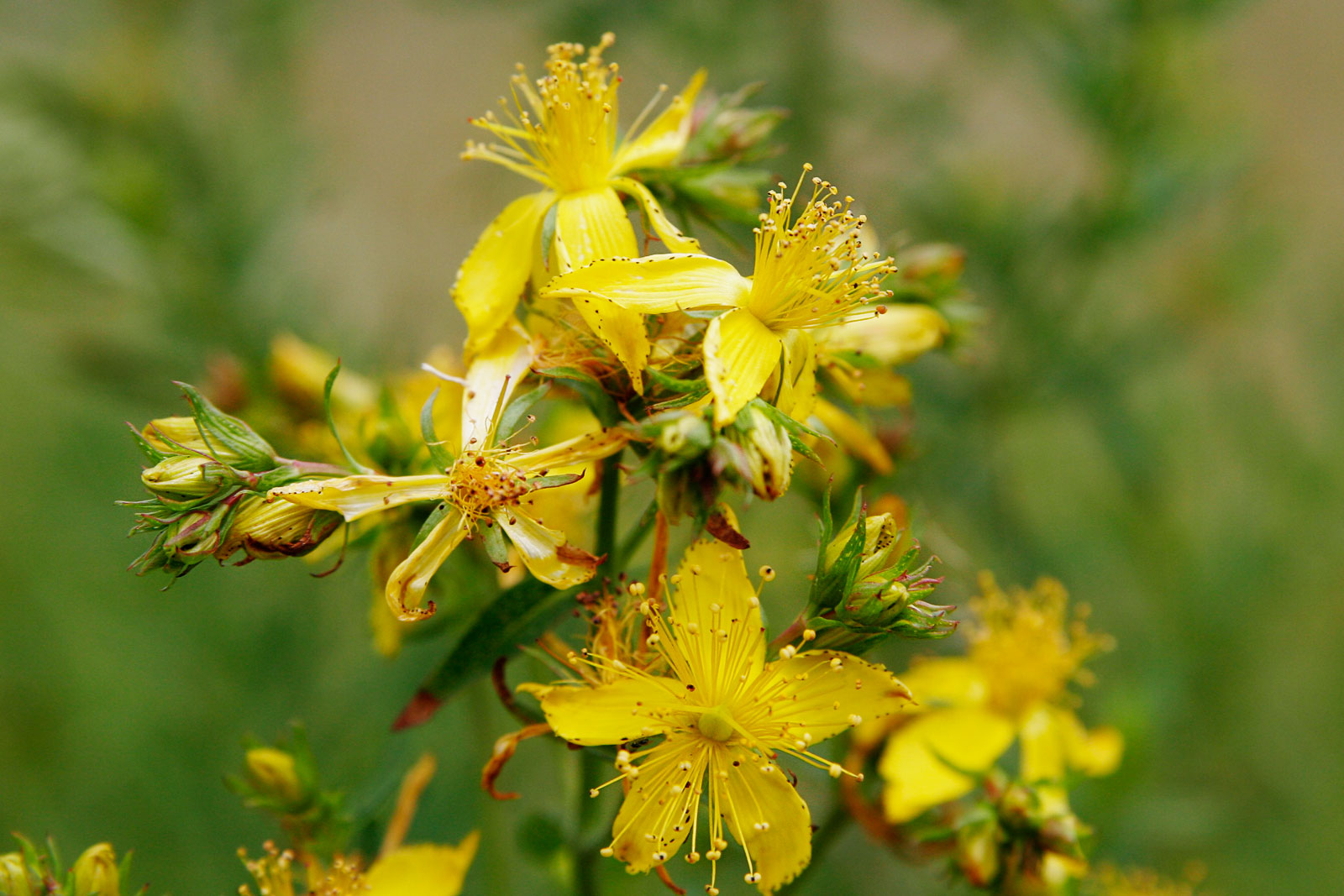
St. John’s Wort can be used to detect another person’s use of magic; in times past, it was held to the lips of accused witches to force them into confessing.
St. John’s Wort (“wort” is Middle English for “plant,” from the Old English wyrt) is one of the most powerful and commonly used of the magical herbs. Considered a “masculine” herb and associated with the sun and fire, it is used to conjure health and protection as well as strength, love, and happiness. It is also used for divination.
With the advent of Christianity, it was associated with St. John the Baptist, and was said to start blooming on his birthday, June 24 (i.e. Midsummer). On the day of his beheading (August 29), the plant was believed to bleed red oil from its leaf glands. It is to this day believed to be at it’s most potent when harvested at Midsummer, likely due to the timing of the birthday celebration of St. John the Baptist. The genus name Hypericaceae means “above an icon” in Greek, and sprigs of the plant were used on images and statuary by the ancients to drive off evil spirits.
In modern magic, St. John’s Wort is believed to be of benefit when carried on the person for courage, protection, detecting other magicians, and strengthening the will when confronted with bad situations. The leaves made into a necklace are believed to ward off sickness and tension, and to enhance endurance and will when doing battle.
For protection from lightning, fires, strong storms, and evil spirits place sprigs of St. John’s Wort in a jar and place the jar on a windowsill. Similarly, hanging bunches of the plant over every window of the house is said to protect from evil spirits and evil or demonic witchcraft. Burning St. John’s Wort as incense or in the fireplace thought to protect the home and repel unfriendly spirits, and burning is common in exorcism rituals.
Placing St. John’s Wort under the pillow of a single woman at night is said to induce dreams of her future husband.
One old Welsh custom for Midsummer was to hang a sprig of St. John’s Wort on a rafter for each family member for the night. The degree of wilting of each sprig the next morning was said to foretell how soon each individual would die, thus giving clues on the state of the health of the individual.
IF YOU LIKED THIS POST ABOUT THE FOLKLORE & OCCULT QUALITIES ASSOCIATED WITH ST-JOHN’S-WORT, CLICK HERE TO SEE MY FANTASY NOVELS IN WHICH ALL THE MAGIC AND SUPERNATURAL EVENTS ARE BASED ON AUTHENTIC MEDIEVAL-RENAISSANCE OCCULT BELIEFS AND PRACTICES.

